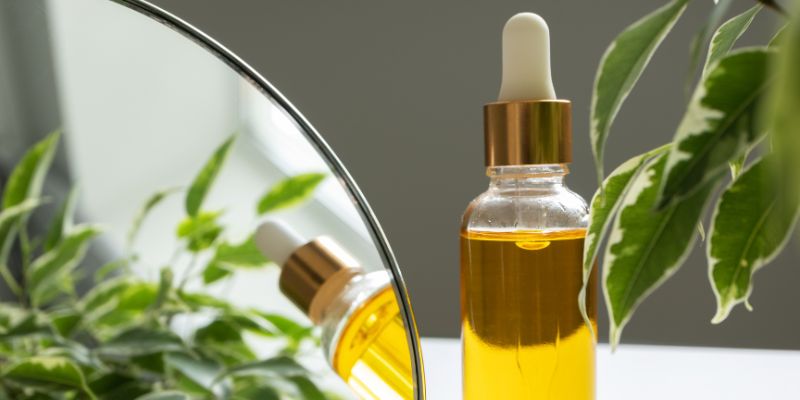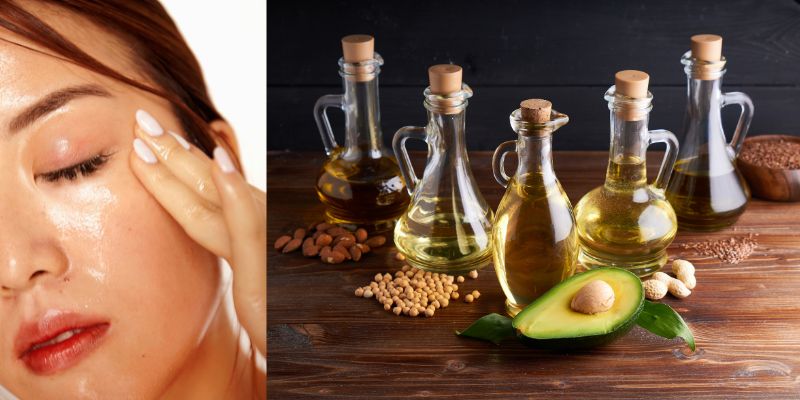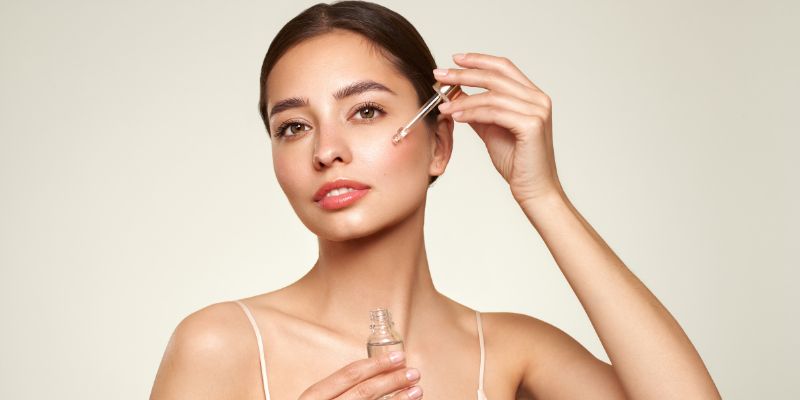Many avoid facial oils, fearing clogged pores and acne. Have you tried them, or do you still worry about breakouts? When used correctly, facial oils can transform your routine by hydrating, nourishing, and balancing oily skin. Follow these steps to safely incorporate facial oils without worrying about acne.
Many avoid facial oils, fearing clogged pores and acne. Have you tried them, or do you still worry about breakouts? When used correctly, facial oils can transform your routine by hydrating, nourishing, and balancing oily skin. Follow these steps to safely incorporate facial oils without worrying about acne.

Why Use Facial Oils In Your Skincare Routine?
Facial oils carry essential fatty acids and antioxidants vitamins, building skin barrier strength while maintaining moisture and fighting dryness. They are especially beneficial for:
1. Dehydrated skin.
2. Restoring the natural glow of skin.
3. Protecting skin against environmental damage.
4. Benefits patients with both oily and acne-prone skin types.
The secret to flourishing skincare is choosing the right oil and knowing how to use it.
Mistakes While Using Oil
People think using facial oil results in acne formation, but it's not true. Different oils work well for various skin types. Hence, there are a few things to consider while using facial oil.
1. Using The Wrong Oil
Different oils have different functions. Certain facial oils possess properties that increase pore blocking and thus lead to acne problems. Wheat germ and coconut oil are among the top comedogenic oils, so people with acne-prone or oily skin should avoid them.
2. Applying Too Much Oil
A little goes best! The excessive application of facial oil will build an oily surface that captures bacteria and dirt. It results in the formation of acne because it attracts dirt from the environment. A few drops are more than enough.
3. Using Oil On Dirty Skin
When oil is applied to uncleaned skin, the pores may become clogged because impurities get trapped. To prevent pimples from developing, clean the face before applying oil. Facial oil application requires cleaning the skin before application.
4. Mixing Oils With Incompatible Ingredients
A few active ingredients in skincare will not blend with oils. For example, when combined with petroleum jelly and heavy occlusive oils, they form a dense skin barrier that blocks skin pores and produces facial acne. They suffocate the skin when applied together.

How To Select The Right Facial Oil For Your Skin Type
Understanding which non-comedogenic oil matches your skin type is an important selection factor. Here's a quick guide:
Best Facial Oils For Acne-Prone & Oily Skin
1. Squalane Oil: The lightweight property of Squalane Oil manages oil production in the skin.
2. Jojoba Oil: Jojoba Oil works like the body's natural sebum to control oil production.
3. Rosehip Oil: Vitamin A in rosehip oil serves two functions: healing acne scars and promoting skin renewal.
4. Grapeseed Oil: Grapeseed Oil possesses antimicrobial properties that stop pores from clogging.
Best Facial Oils For Dry & Sensitive Skin
1. Marula Oil creates deep hydration without any greasiness.
2. Argan Oil provides essential fatty acids and soothes skin irritations.
3. Avocado Oil is rich in antioxidants, acts as a deep moisturizer and enhances skin moisture.
4. Camellia Oil delivers nutrients to your skin.
How To Apply Facial Oils Without Causing Breakouts
Step 1: Start With Clean Skin
You need to cleanse your face thoroughly before applying any facial oil. A mild cleanser keeps the skin healthy while eliminating debris and excess oil.
Step 2: Apply On Damp Skin
You should use facial oils on damp rather than dry skin because wet skin helps the oil absorb into the skin much better than dry skin. You can use it after washing your face or gently spritz it before applying it.
Step 3: Use Few Drops
A few drops (1-3) of facial oil are enough for the entire face. Applying too much face oil clogs your pores. Start with a small amount and slowly increase the amount.
Step 4: Avoid Rubbing
Instead of rubbing the oil into your skin, use gentle pressing motions to dab the oil into your skin. This will facilitate your skin's absorption of the oil and reduce irritation if your skin is sensitive or dry.
Step 5: Apply In The Right Order
A skincare routine must follow the correct order. Facial oils should be used at the end of the routine. You can apply them just before sunscreen in the morning and after moisturizer at night. Using facial oils too soon creates a protective layer on the skin, which stops other skincare products from entering.

When & How Often To Use Facial Oils
For dry skin, use daily, morning and night.
For oily or acne-prone skin, use twice or thrice a week, or mix a drop with your moisturizer.
Apply only on dry areas for combination skin, or use a lightweight oil like squalane.
Many oils work best at nighttime repair to nourish and repair the skin while sleeping.
Can You Use Facial Oils Without Breaking Out?
Choosing the right oil for your skin type, applying it correctly, and using it gently are essential. Well-applied face oils help skin hydration, barrier maintenance, and breakout control. If you have been reluctant to use face oils, start gradually, try different oils, and monitor your skin. You may discover that your beauty routine lacks the proper face oil!
- Share this article:
-
![A Guide To The Best Safari Destinations In Africa]() Travel
Travel - A Guide To The Best Safari Destinations In AfricaImagine watching lions roam, and elephants gather at waterholes during a breathtaking African sunset. Africa offers incredible safari experiences, with vast natural landscapes and wildlife in their purest form. Let's read about top safari destinations, from witnessing the Great Migration to luxurious or adventurous safaris tailored to all preferences.
-
![Minimalist Skincare: Do You Need 10 Steps?]() Beauty
Beauty - Minimalist Skincare: Do You Need 10 Steps?Do you feel pressured to buy countless skincare products for glowing skin? The minimalist skincare trend simplifies routines with more innovative, more effective solutions. But does it work? Let's break down which products are necessary for healthy, radiant skin without being overwhelmed.








